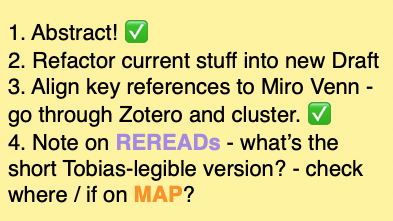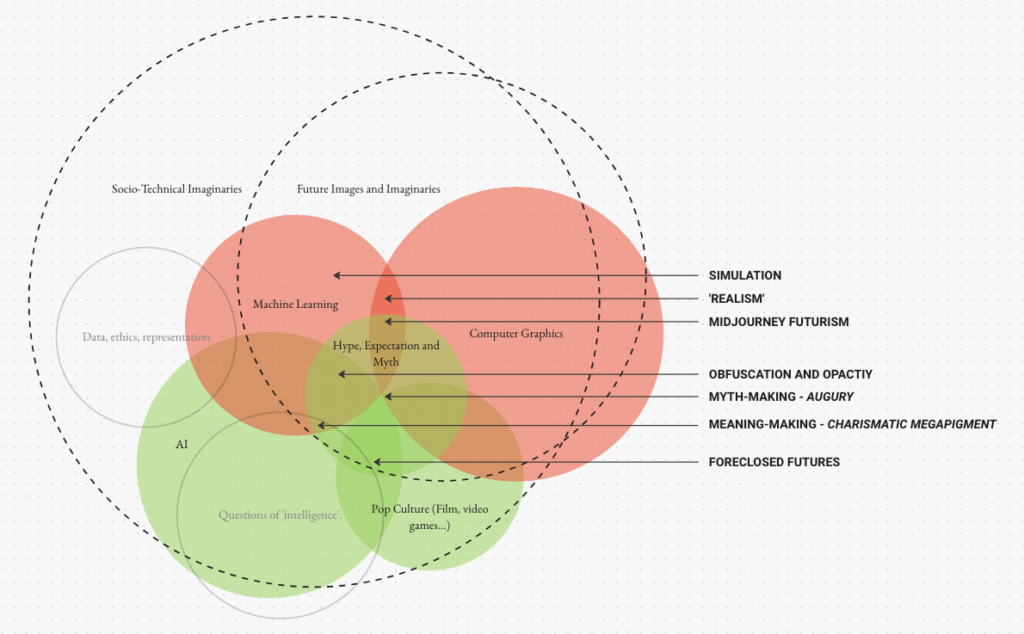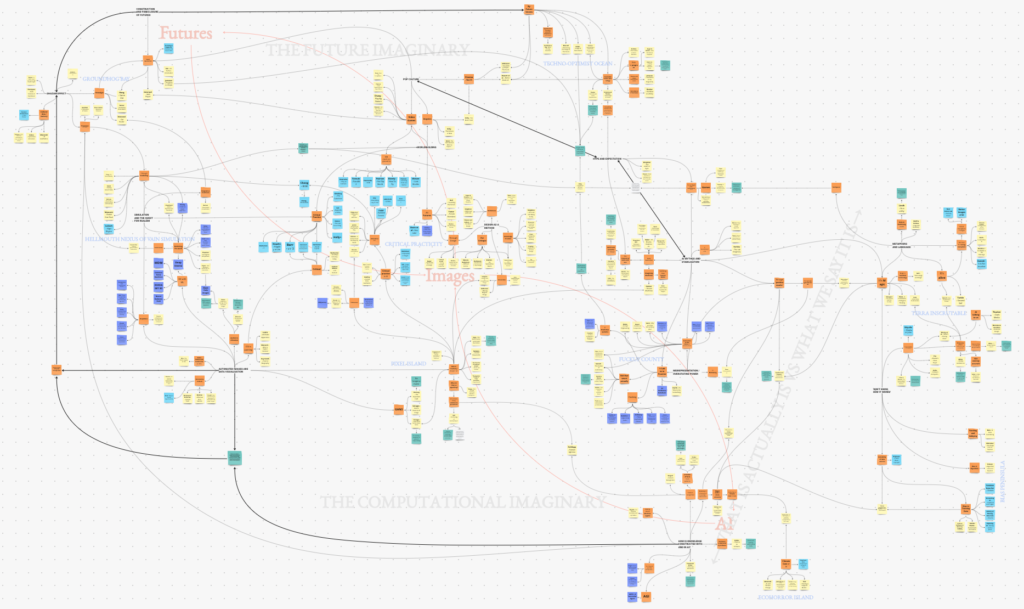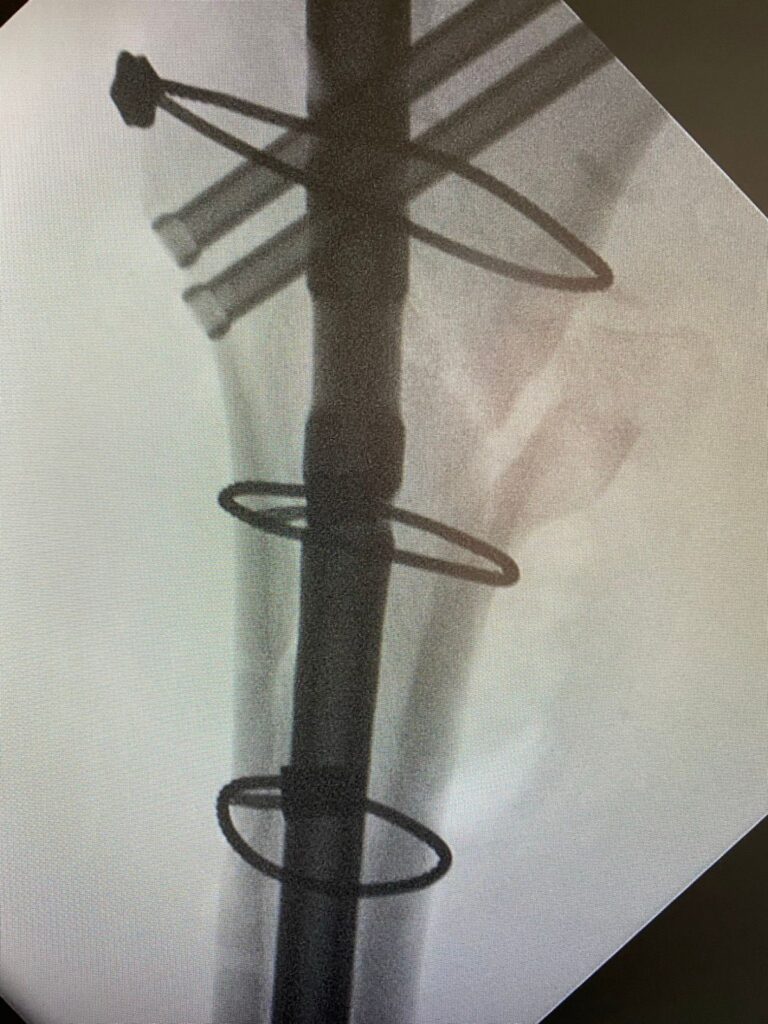There’s never any time to think. I was listening to Rory Stewart and Alistair Campbell’s new podcast and they were discussing why the supposedly smart people in charge made stupid decisions the other week: Young, up-and-coming politicians have plenty of time to think and articulate; to refine and discuss ideas. Once they have responsibility, and the busy business of statehood creeps in, they don’t and they become increasingly reactive.
Since returning to work after The Crash I’ve found myself relentlessly chasing, being chased and reacting. Never thinking and as a result I made a silly decision (nothing on the scale of crashing an economy.) I need to make more time to think somehow. Cycling used to be my thinking time: As I was on the trainer or cruising around hills and valleys I would literally talk to myself to work out ideas or difficult conversations. And as you know, I think everyone talks to themselves, it’s just taboo to admit it. In Graeber and Wengrow’s book they talk about this self-reflection – to be able to have a conversation with yourself and imagine contrary or agreeing ideas and positions as the root of politics.
Excuse me, is this a piece of your brain?

Reading is very much two-steps forward, one step back. For everything I read (and I’m still mostly cracking two or three articles or papers a day) I find two more things I want to read. For instance, I might come across this and realise that almost everything being referenced I want to read too and bam I’ve just added six or seven more things to the pile.
The other problem with reading thing is there are so many things I read that I just cannot understand. This is a particular problem with ‘canonical’ philosophical work that comes up and over and over again in other writing. (Eg. Simondon, some Jameson, Foucault). I pour over these insufferable and terribly written and/or translated tracts just trying to grab something to hold on to to make it make sense. Then maybe I get something, or read an article/wikipedia entry about the chapter/paper/article and get it but it just won’t stick in the brain! I’ve read, have saved and annotated two different translations of On The Mode of Existence of Technical Objects maybe five or six times over and still couldn’t tell you what it’s about or what the fuck ‘concretisation‘ means.
On the other hand, there is a lot of very, very, very good writing from social sciences which makes up for how bad philosophy is. (Don’t even get me started on Stiegler who can frankly, do one.) It just makes me angry that people lock what are apparently great ideas away behind language. I’m a dumb-dumb designer not an English literature scholar.
I finally wrote the abstract this week. This is, of course, by no means final and it is surrounded in an aura of insecurity. I imagine it will be iterated out of recognition over the next two years but I’ve eschewed putting it down thus far for fear of the commitment or the potential that it’s wildly stupid or grandiose or whatever.
This thesis in set in the context of the way images of AI futures are constructed and disseminated and how they return to shape or reinforce AI imaginaries in the present. Through critical practice, the thesis explores and critiques the construction of myths in AI and their alternative imaginaries; how stories, spectacle and metaphors are used to project power and meaning onto AI; and how visual and design language can be used to both foreclose and challenge the immaterial and as-yet contested futures of AI.
The contested space of AI’s imaginaries and futures raises critical questions for design’s role in reinforcing or challenging these dominant imaginaries. Where scholars and practitioners have engaged with the designerly dimensions of human-imperceptible technologies like radio waves, few have meaningfully engaged with the inscrutable dimensions of AI; in particular its construction as both a technological artefact and a social phenomena.
In particular, this thesis focuses on the visual and designerly qualities of AI futures and how certain imaginaries are made manifest in powerful visual metaphors, demonstrations, spectacles, performances or stories which are used to foreclose alternatives and prescribe particular futures or imaginaries. Often, these manifestations, stories and spectacles rely on advances in computer graphics in combination with designerly techniques and tools to generate synthetic future images of AI at the same time as AI itself is increasingly used to generate these very same synthetic images of the future.
The result is a recurring loop of imagination and perceived or reported technical advance and hype that forecloses possible alternative futures for AI outside of dominant narratives emerging from spaces such as Hollywood and Silicon Valley. This thesis explore the opportunity for alternative imaginaries emerging from art and design and explores aesthetics for critiquing these future images.
*I like the idea of synthetic images as like wholly-speculative images both technically and conceptually but am not sure yet how the loose definition in my head is say different from speculative images. Especially as, in the context of AI/ML synthetic has a very particular and useful meaning
*What’s the difference and relationship between an imaginary and a future? I think a future is a type of imaginary. AI imaginaries also extend into the present (innovation, funding, potential, culture etc.) and just a component of them is the future bit. That’s my theory but.
There. I did it. The other big thing this week was making big giant maps as a result of trying to write that abstract. See, in my head I had the words; AI, imagination, futures, images, but no idea how they fit together. To tackle this I decided to map them out for their overlaps and relationships as ‘ideas’ and then also plot where in that map were the bits I want to investigate or talk about.

Of course this then led to a bigger question. Last time I wrote I mentioned how I’d gone through my whole library to meaningfully tag everything for better understanding of what I have and don’t. How does the library map onto this? Where have I got lots of great literature and practice and where have I got none? Does it change the focus of what I think my PhD is?

Well this is the reason I’m a week late writing to you: What I thought would be a fun, Sunday afternoon activity took a few hours every day up to last weekend. I started just putting down articles, practices, ideas and connections from the library. I’ve explained the ‘logic’ of it above. I know connectivism is whatever but it works for me. As well as being quite a pleasing exercise it was useful in a couple of ways:
- I need a literature review. This is the second daunting task and this map is a literature review. I just need to figure out how to get the multi-dimensionality of it and my thinking into the linear structure of writing. This is worth coming back to as a problem in a later post. All of this work is really about loops – how image create and are created by futures and futures create and are created by technology etc. etc. There’s no linear route.
- I can see where there are gaps. There’s much more in the writing and thinking about AI and images than there is in the futures area. So that’s a good place to spend some time in the future. For now I can use the stuff I have to work on my indicative chapters.
- I managed to trim some stuff; to identify what’s just interesting or fun from what’s actually going to contribute to my thinking.
You can probably guess that I did this all in Miro which is perfectly fine no matter what Dr. David Benque thinks. And one of the great things about that is I can open it up for you to have a look around. Hell, why not? I’d like to invite you to add comments because I think that would be super helpful but I’m not getting the paid-for Miro so for now, please have a look and an explore and if anything jumps out at you and you can be bothered, send me a note.
This week I’m going to be going back to point two; refactoring my current stuff I’m happy with from round 2 writing into round 3. I’ve already started doing this for the methodology. I think it’ll be useful in reflection of the maps above to see if they fit together.
Recents
I visited the lovely folk of the From Later broadcast again yesterday where we talked about voice synthesis, video game dance moves and my own, very solid notion of #breezepunk. It’ll be out soon. Also the trailer for Abundance – the film the Arup Foresight team have been busily working on over the summer is up and out there. If you’re interested in screening the whole thing or running an event, then get in touch!
Short Stuff
- Antikythera
- The Inflation Reduction Act may, in fact, encourage more climate and green investment than even predicted.
- Dan Hon on maybe the metaverse is a verb not a noun.
I’m sorry that’s all I have. I have something else but I need to save it for a podcast. Love you.
